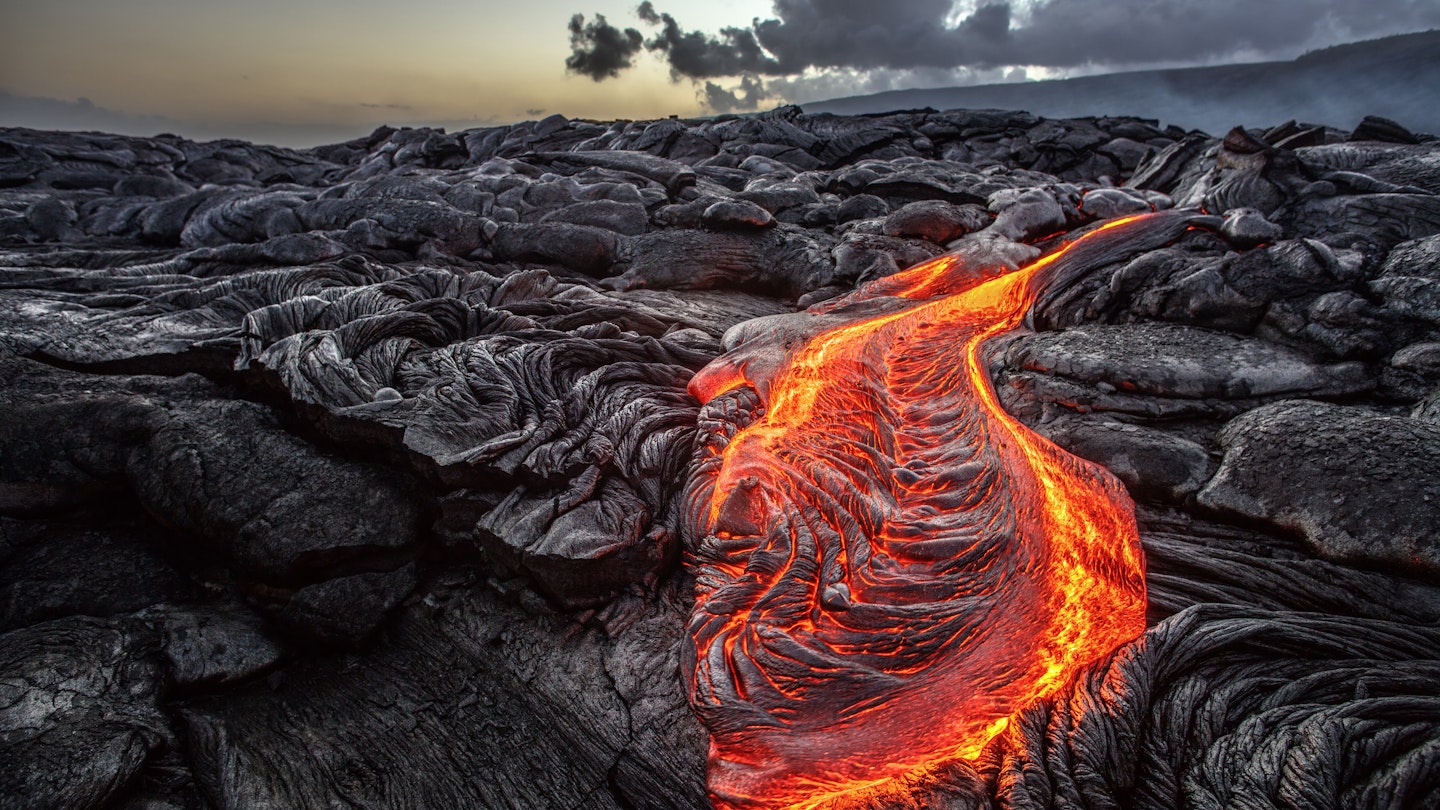Discover the Wonders of Hawaiʻi’s Big Island
The island of Hawaiʻi, known as the Big Island, stands out as both the largest and youngest island in the Hawaiian archipelago. Its remarkable size and age are attributed to its iconic volcanoes, which form the backbone of its rich cultural heritage and existence.
The rich soil of the Big Island is infused with minerals from volcanic activity, fostering an agricultural paradise. Visitors are treated to world-renowned beaches characterized by both white and unique black volcanic sands, sculpted through an incredible interplay between the ocean and flowing lava.
The mana of magma in Hawaiʻi
The Hawaiian culture deeply appreciates the concept of mana, often described as “vital energy.” This life force is present in various aspects of island life, from the lush jungles of Puna to the vibrant landscapes of the Kohala Coast.
Yet, while the creative power of lava gives life, it may also unleash destruction. The volcanic energy on the Big Island possesses a unique duality, generating both growth and peril, capable of demolishing homes and creating hazardous conditions. Therefore, it’s crucial to approach the island’s volcanic sites with respect, which is often advised by local authorities, particularly within Hawaiʻi Volcanoes National Park.
Natural wonders of the Big Island
The island’s landscape is a kaleidoscope of environments, from the vine-laced forests of Puna and Kaʻū to the emerald valleys of the Hāmākua Coast. It also includes the stark beauty of the Kohala Coast, a desert-like area dotted with lava rock fields and dry grass. This vibrant ecosystem is the result of volcanic activities from five prominent shield volcanoes: Maunakea, Maunaloa, Hualālai, Kohala, and Kīlauea.
In fact, Kīlauea’s Halemaʻumaʻu crater is believed to be the residence of Pele, the Polynesian goddess of fire and creation. Recent events dramatically reshaped this area, emphasizing the active role that volcanic activity has in shaping the island. A way to honor Pele is by visiting her volcanic home within the breathtaking Hawaiʻi Volcanoes National Park.
The park features various trails and scenic drives, such as the Chain of Craters Road, which offers a 20-mile journey through stunning geological formations that showcase the remarkable transformation wrought by lava. The Sulphur Banks Trail provides a unique experience, with a boardwalk guiding visitors through misty vents, with vibrant colors resulting from sulfur-infused steam.
Valleys of the Kings
The northeastern coast features a series of erosional valleys, with Pololū Valley and Waipiʻo Valley standing out. These valleys have historically been integral to the culture and sustenance of Native Hawaiians, owing their fertile soil to volcanic origins. The valleys once served as the political heart of Hawaiʻi, underpinning the prosperity of the early aliʻi (chiefs).
This striking energy resonates strongly in the valleys, often thought to possess mystical qualities. Today, they are believed to be inhabited by the menehune, a legendary race from Hawaiian folklore. While Hualālai volcano boasts rich soils, it does not carry the regal connections of Pololū and Waipiʻo, yet it supports the island’s famous coffee. The distinct Kona coffee is an agricultural hallmark that thrives due to the island’s unique volcanic environment.
Landscape of lava
The Kohala Coast features a stark contrast, presenting a hot, arid landscape far removed from the lush tropics typically associated with Hawaii. This region showcases extensive lava fields—evidence of previous eruptions. Lava on the island is primarily categorized into two types: pāhoehoe and ʻāa. Pāhoehoe lava flows smoothly, resembling thick ribbons, while ʻāa lava is jagged and rough, characterized by its spiny texture that warrants admiration from a distance.
The Big Island is a treasure trove of volcanic wonders and natural beauty, making it a must-visit for travelers seeking both adventure and tranquility in a land of diverse ecosystems and rich cultural heritage.
This article was produced by GoTravelDaily. All editorial views are those of GoTravelDaily alone and reflect our policy of editorial independence and impartiality.
This article was originally published in October 2018.
This article was first published on Oct 18, 2018, and updated on Jun 18, 2021.





